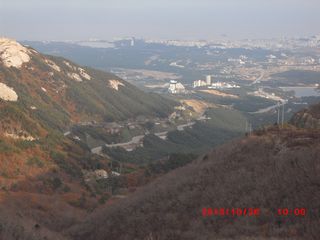Three Steps To Business Network Building in Korea
By KBC Creator Steven S. Bammel
From the Korea Business Advisor column in the August 2011 issue of Seoul Magazine [EXPIRED LINK REMOVED: http://www.seoulselection.com/seoul/].
It’s all about maintaining contacts–lots of them
I never throw away a business card that I’ve been given in Korea, at least not before scanning and filing it away digitally. Lately, as my activities outside the office have increased, I’ve enjoyed more opportunities to network, and my collection from the first half of 2011 includes 162 unique business cards.
The Network is Everything
Why do I go to such effort? The answer is simple. In Korea, my business network means everything to me. And notwithstanding the value of online networks too (after all, I did create Korea Business Central as a place to network online!), offline relationships with those I’ve met face-to-face are the most valuable, especially in Korea.
We’ve all heard about how Korean society is group-based. I’m often amazed at Korean associates who still attend annual get-togethers with their elementary school buddies, not to mention end-of-year parties for middle school, high school and university alumni, as well church, hobby, academic field and other “circle”-based groups.
It’s not an understatement to say that these networks are powerful. When you look at movers and shakers in modern Korean business and politics, it’s simply remarkable how often you find connections arising from such bonds.
Expats in Korea Face Advantages and Disadvantages
Those of us coming to Korea later in life do not start out with a local network. And since the value of relationships grows with time, even those of us in Korea for ten or twenty years will never achieve relationship longevity on par with the average Korean businessperson. One of the reasons Korea can seem like a closed society is the lack of access we have to some aspects of Korean-style network building.
However, as foreigners, we also enjoy advantages. We can show up at just about any function in Korea and be welcomed warmly. Oftentimes this is because of our uniqueness as foreigners, but Koreans are genuinely warm-hearted too and want to establish connections with us. This means we can find ourselves receiving a lot of business cards in the course of our dealings in Korea and this ability to network across group lines gives us significant and flexible network building opportunities.
A Business Card Means “Permission to Contact”
The exchange of business cards is a key means of building a network in Korea because when someone hands over their business card, they are giving you “permission to contact”. Of course, the card is only as valuable as you make it though; without follow-up, the value of this privilege withers and dies. On the other hand, if you treat your business card stack as a valuable asset, you then everything you need to cultivate your network.
Three Steps to Business Network Building in Korea
Here are some tips on making the most of your business card connections:
Step 1: Save and organize your cards
You should be able to find specific people in your card collection based on some system that works for you. I organize my cards by date and by the occasion on which I met someone. Thus I have a stack of business cards labeled “June 17 – Seoul Global Business Networking Event” and another one “April 15 – McKinney Consulting Breakfast”… and many more. These help me to remember who I met and where, which is a prerequisite to doing something useful with my cards later.
Step 2: Follow-up by email with business cards
There is no reason not to follow up by email with people who gave you their business card telling them how nice it was to meet, reminding them what you do, inviting them to join your LinkedIn or LinkNow network and, if you would like to meet them again, suggesting a meal or coffee together at some indefinite time in the future. If you really want to do this right, include a hyperlink or document attachment to some resource that will be useful to the recipient in their business. Remember, the business card means “permission to contact”, so don’t throw away this right lightly.
Step 3: Strategically invite people to meet
Of course, you can’t meet everyone again, but there will be some you’d like to sit down with for a chat. If you completed Step 2 properly, you’ll have gotten responses from many recipients, especially since you will have been one of the rare folks to actually follow up. By the time you get to Step 3, an invitation to meet is very unlikely to be turned down.
This one-on-one meeting might be the beginning of a long-term relationship in Korea that could lead to yet more connections, and your persistence in cultivating these relationships will lead to a business network in Korea that becomes more and more valuable with time, oftentimes leading to surprising opportunities.
Don’t get frustrated with the aspects of Korean business that seem closed. I encourage you to make the most of the advantages you have in being more successful dealing with Koreans in business.
For additional information on the following related topics and more, click here to visit the a dedicated page on Steven’s weblog:
- An Example of Long-Term Business Networking in Korea
- The Definitive Guide to Business Cards in Korea
- Message to an Associate – On Being Successful in Korea



